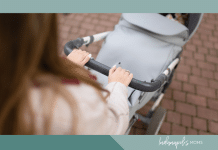 As parents and caregivers keeping our children safe and healthy is one of our highest priorities. We would never want to do anything to put these sweet little ones in harm’s way; however, being a parent is busy and overwhelming, and it’s difficult to keep track of all the recommendations. Following car seat safety guidelines is an important way to help keep our children safe. According to the CDC and the National Highway Traffic Safety Administration (NHTSA), car crashes are the leading cause of death for young children. 46% of car seats and booster seats are used incorrectly. These statistics may or may not be shocking to you, but using the correct car seat or booster seat and using it correctly can be life-saving. This is why it is essential to use the right age and size appropriate seat in your vehicle for every trip, no matter how short.
As parents and caregivers keeping our children safe and healthy is one of our highest priorities. We would never want to do anything to put these sweet little ones in harm’s way; however, being a parent is busy and overwhelming, and it’s difficult to keep track of all the recommendations. Following car seat safety guidelines is an important way to help keep our children safe. According to the CDC and the National Highway Traffic Safety Administration (NHTSA), car crashes are the leading cause of death for young children. 46% of car seats and booster seats are used incorrectly. These statistics may or may not be shocking to you, but using the correct car seat or booster seat and using it correctly can be life-saving. This is why it is essential to use the right age and size appropriate seat in your vehicle for every trip, no matter how short.
Here are 11 common car seat safety mistakes you’ll want to avoid:
1. Turning the car seat forward too soon
Children should be restrained in a rear-facing car seat AT LEAST until age 2. However, the American Academy of Pediatrics (AAP) recommends keeping them rear-facing longer in most cases until they meet one of the limits of that seat. The head, neck, and spine are still developing in young children. Crash forces experienced in a forward-facing position can be too much to endure, leading to injuries. Therefore, rear-facing is the safest position. Parents or caregivers often want to turn kids around due to worry about legs being bunched, but they are typically quite comfortable this way, and it is not a reason to turn them around.
To know when your child has reached the limit of their seat, check your car seat’s instruction manual to find out when your child reaches: 1) the height limit OR 2) the weight limit OR 3) the head height limit (where the top of the child’s head should be in relation to the top of the car seat).
2. Moving from car seat up to booster seat too early
Children should remain in a forward-facing car seat at least until age 5, but it is safest to continue to use a 5 point harness until the child has reached the maximum weight or height limit of that particular seat. Please also note that if you are installing a seat with a latch system (instead of the belt path), these latches actually have weight limits too. You will need to switch to using the seat belt to install at a certain weight. It is not recommended to use both methods together. Again, check your manual for specific weight limits.
3. Shoulder strap at the incorrect height
Children grow quickly, but it’s easy to forget when we see them every day! Make a point of regularly checking the height of their harness straps. Straps should be at or just BELOW the shoulders in a rear-facing seat. For forward-facing children, straps should be at or just ABOVE shoulder height.
4. Loose installation
Car seats must be installed tightly to ensure adequate car seat safety. Once your car seat is installed, grab the seat close to the vehicle seat back (near the belt path) and shake the car seat. If it moves forward and back or side to side more than 1 inch, you need to tighten it. I have kneeled in our car seat or had another adult press down on the seat while I tightened to help with this.
5. Placing the strap through the wrong belt path
If you have a seat that can be placed in the rear or forward-facing position, it will have two belt paths. When installing your seat, make sure to place the belt through the correct path. The seat is often labeled with this information, and it will certainly be in the owner’s manual. When the wrong belt path is used, a car seat can actually flip over backward.
6. Forgetting to tether with forward-facing installation
Correct forward-facing car seat installation is tight but also includes proper use of a top tether anchor. You may need to check your car seat manual as well as your vehicle manual to ensure you know the steps for correct installation. The top tether anchor can keep the car seat from moving forward several inches during a crash. This can prevent your child from hitting their head. A vehicle may not have these anchors at every seat, so this is definitely something important to pay attention to when buying a car!
7. Chest clip at the incorrect height
Once buckled, the chest clip should be positioned at armpit level – not higher or lower. This helps prevent injury to the abdomen or neck that can occur from forces if the clip is too high or low. The chest is much better equipped to handle the forces of a crash. A chest clip that is too low could also lead to a child being ejected from the car seat as the straps can slip down off the shoulders.
8. Missing the expiration date
If you are using a car seat for multiple children in your family or happen to be using a hand-me-down seat, make sure to check the expiration date before use.
9. Leaving harness straps too loose
After your child is buckled in, try to pinch the straps near the shoulder or collarbone. If you can pinch any strap, it is not tight enough. If you can’t pinch, you are in a good spot. Parents often worry about red marks on a child’s neck from the straps, but this is typically not a concern.
10. Wearing bulky clothing or jackets
This is a great reminder as the weather gets colder. It is not safe to put an infant or child in a car seat while wearing a puffy coat. You simply cannot get the harness buckled tight enough to protect them in case of a crash. It may be inconvenient, but it is safest to wear thinner layers under the harness – think about what you would have them wear indoors. They can keep on a hat & mittens and then place a blanket or coat on their lap OVER the harness after it has been buckled.
11. Not knowing what to do with your seat after a car accident
After a car crash, it is important to know if you can reuse or need to replace your car seat. Certain brands recommend calling the manufacturer to describe the details of the crash and help determine the best route. Some brands, such as Graco and Chicco, recommend always replacing after an accident. Yet other brands such as Britax, Cosco, and Safety 1st recommend following the NHSTA Recommendation to replace after a moderate to severe crash, but may not automatically need to be replaced after a minor crash.
Ensuring car seat safety can be overwhelming, but there are a lot of resources out there to help! When in doubt, check your instruction manual. If you are on Instagram, I suggest following @safeintheseat. Her account is an incredible resource. If in doubt, schedule an appointment with a Child Passenger Safety Technician to receive help with installation – it could save your child’s life! If you are local to the Indy area, you can call or text 317-499-4779 to schedule an appointment with Riley’s Injury Prevention program or search the NHTSA to find a technician in locations all over the US.








